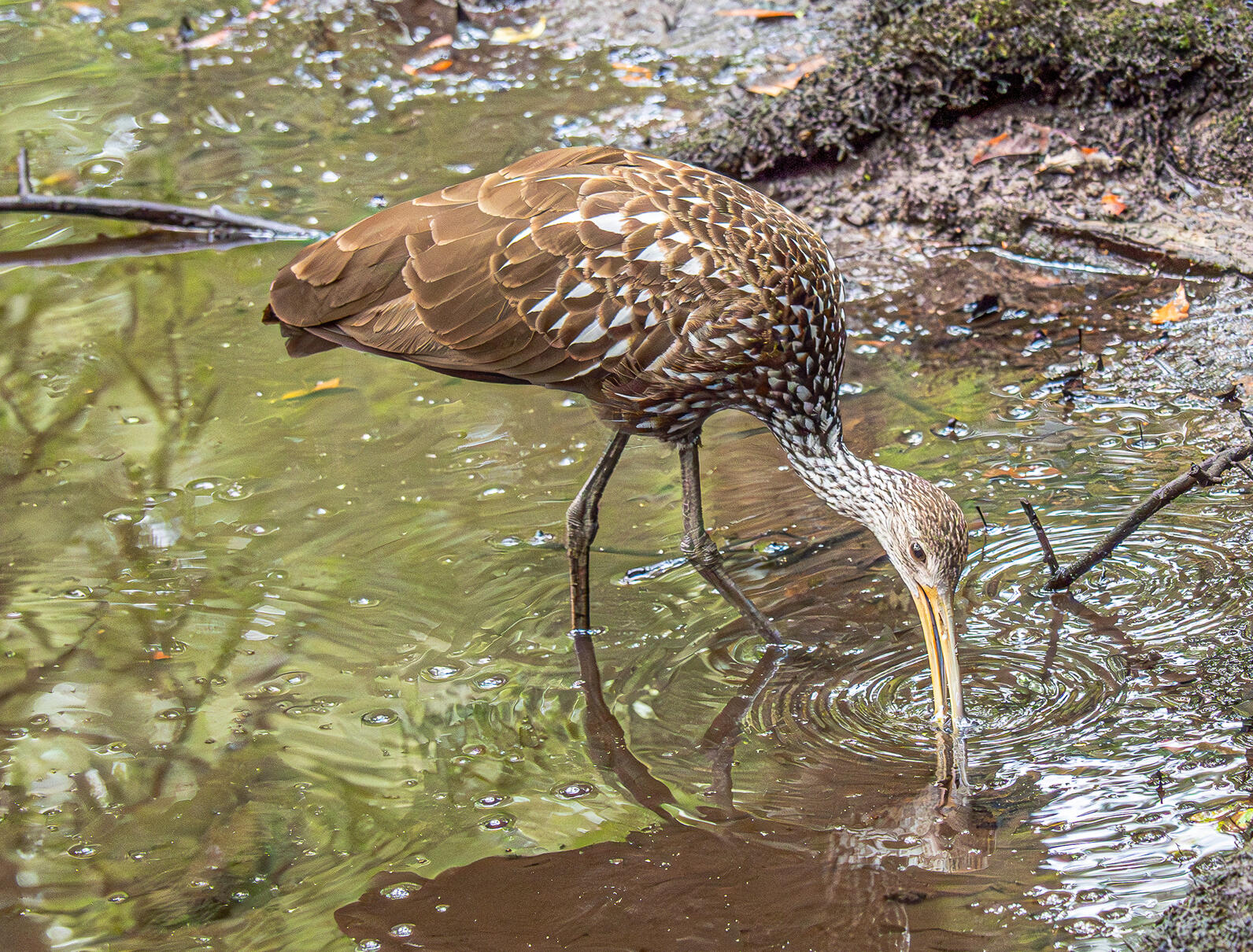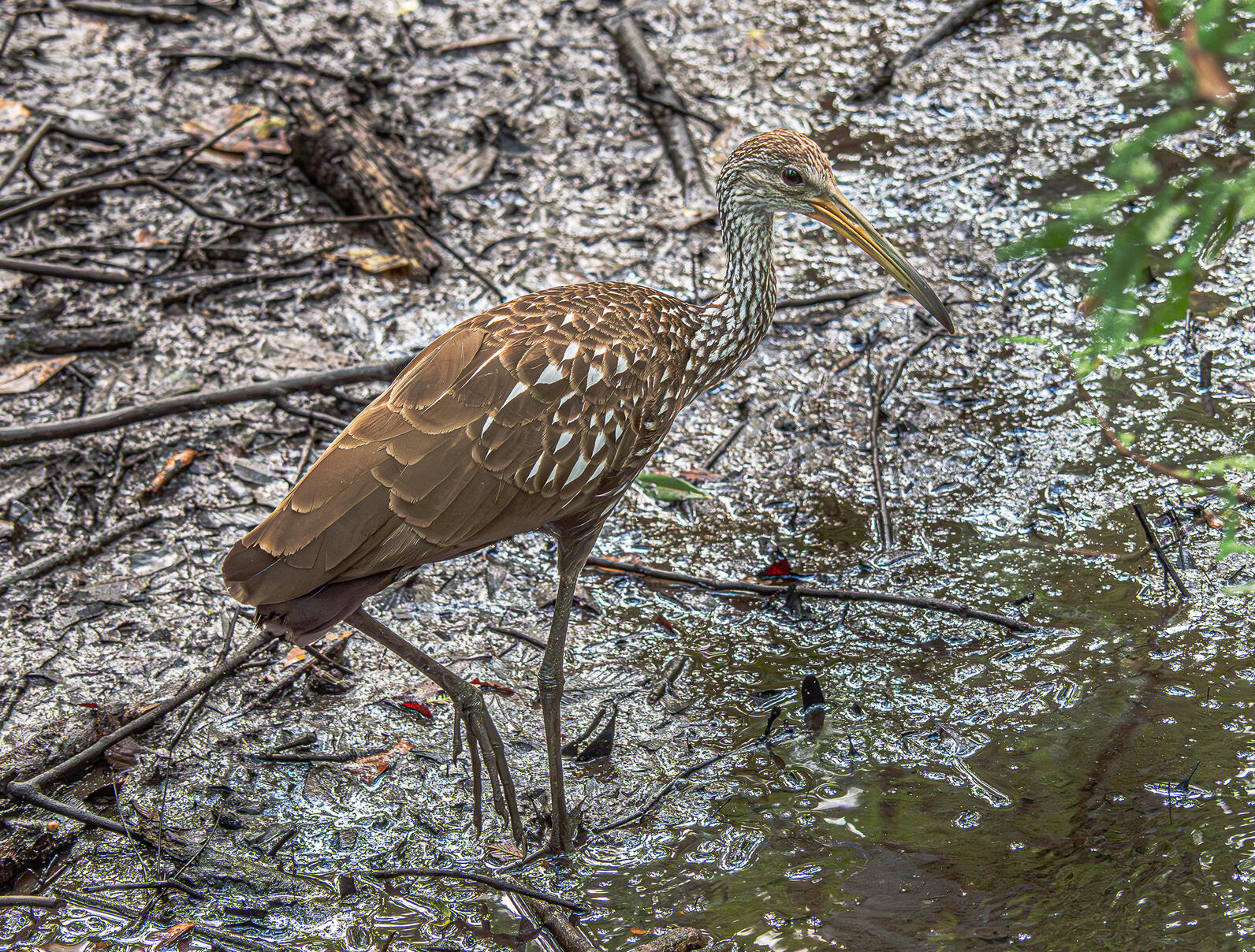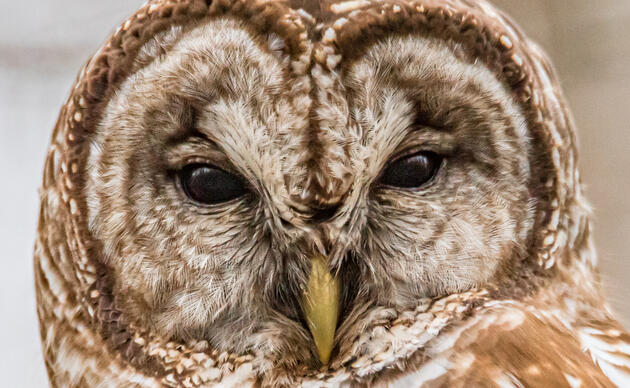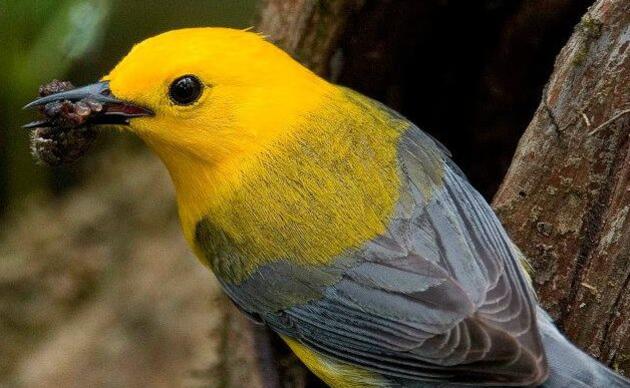For a second time in almost 50 years, a Limpkin (Aramus guarauna) has been spotted off the boardwalk, this time on August 27th, 2023. The last one was seen on June 5th, 2019, and was quite a surprise. If you’ve never heard of a Limpkin before, don’t worry, their presence in the US is fairly limited, mostly along the main peninsula of Florida. Named for their peculiar walk in which they appear to be limping, the Limpkin’s diet consists mostly of apple snails, which you should also not worry if you’ve never heard of before, they don’t occur in South Carolina either, though there are some populations in Georgia (and are likely from aquarium pets being dumped).
Apple Snails are freshwater amphibious snails with both a gill and a lung, and they have a long breathing tube they can extend to the surface for air which helps them hide underwater from predators. The Florida Apple Snail (Pomacea paludosa) is about the size of a golf ball, whereas an invasive species, the Island Apple Snail (Pomacea canaliculata) can get as big as a tennis ball. That’s a lot of snail! And as it turns out, a nice meal for Limpkins and Snail Kites, which quickly adapted to feed on the larger invasive snails and probably one of the few instances in which a devastating invasive species actually helped an endangered native one (in the case of the Snail Kites).
So, why would a bird who specializes in a prey item that doesn’t occur at Beidler Forest be at Beidler Forest? What is their motivation? We do have a snail in the swamp, the White-lipped Globe Snail, a terrestrial snail that can grow about the size of a quarter, but you wouldn’t find them under the water where the Limpkins stalk (although you might find them on cypress knees, but you’d have to search hundreds of knees just to find one). I don’t think it’s likely that our snail population offers up anything worthwhile to a large bird like the Limpkin.

Looking further at their diet offers some clues, and the biggest clue is that they will take freshwater mussels if there aren’t any large snails. Four Holes Swamp has an abundance of freshwater mussels, some that can be half the size of the palm of your hand. And while the Limpkin has a bill like a pair of long tweezers that are specialized in prying snails out of their shells without breaking them, this bill also can be used as a wedge to pry open a mussel just enough to sever the muscle used to keep itself sealed shut, similar to American Oystercatchers. If they can adapt to favoring mussels they’d have a fine time here and little to no competition.
Limpkin are not competitive by nature, their behavior is calm and casual, often being undisturbed by the presence of people (although whether people are disturbed by Limpkins’ noisome nocturnal habits is another story). Other animals are more competitive, and both Snail Kites and grackles have been reported to snatch prey right out of Limpkins’ mouths. At Beidler Forest that wouldn’t be an issue. Limpkins are also very neat, when they find prey they will carry it over to their favorite spot and deal with it there, often leaving a pile of shells in one small area. That’s a telltale sign we’ll have to look for in the future.
Okay, so we have some reason to support the presence of Limpkins being here, but we still haven’t answered why they’re at Beidler Forest, specifically. We just don’t know, but the answer might lie elsewhere. From reports by the U.S. Fish & Wildlife Service and the National Oceanic and Atmospheric Administration we know that Florida has lost 67% of its wetlands, mostly within the last 70 years. The effects of sea level rise are also impacting Florida’s long coast, and while Limpkins prefer freshwater wetlands, rising sea levels means more salt being pushed further inland, which can negatively impact both the native plants and animals that live there (the ubiquitous pouring salt on a slug story).
So, if you need a refuge from the stresses of the world and drop by our swamp for a visit and just happen to spot a Limpkin (or two), please let us know! We’d like to keep our eye on this trend, and if it turns out that the Limpkins also need a refuge from the stresses of the world, well, that’s why we’re here.








